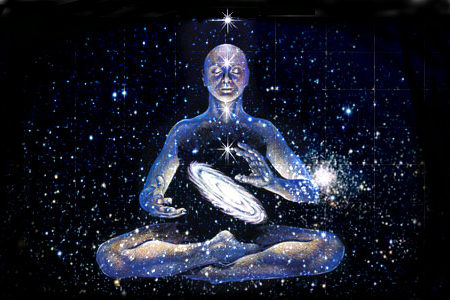Matsya to Meena or Sata Yuga to Kali Yuga
Four Yugas
The cycle repeats itself, so altogether there are 1,000 cycles of Mahā-Yuga in one day of Brahma.
The four yugas which come one after the other are as follows (along with their durations):
The 4 Ages are:
1. The Satya or Krita Yuga, a Golden Age
2. The Treta Yuga, the Age of Ritual
3. Dvapara Yuga, the Age of Doubt: Man loses the sense of the Divine Reality of the world and grows away from natural law
4. The Kali Yuga, the Age of Conflict and confusion began in 3012 BC and will end with the nearly total devastation of the present humanity

In Hindu metaphysics time is cyclical and each period of manifestation is called a KALPA of Brahma, equivalent to 4.32 billion human year.
The KALPA is subdivided into 14 MANVANTARAS.
We are now in the seventh MANVANTARA of this KALPA.
Each MANVANTARA is divided into 71 MAHA-YUGAS of 4,320,000 years each.
We are in the 28th MAHA-YUGA of this MANVANTARA.
Each MAHA-YUGA is made up of four yugas
Each Yuga is preceded by a period of a dawn and followed by a period of twilight. [Linga Purana 1.4.3-6]
Longer alternatives
The Bhagavata Purana also goes on to give an alternate list, wherein it numerically lists out 22 Vishnu avatars in chapter 1.3.[53]
ancient ancestor's ancestors
- Four Kumaras (Catursana) [BP 1.3.6] – the four Sons of god Brahma and exemplified the path of devotion
- Varaha [BP 1.3.7]- The divine warthog who lifts earth from cosmic waters
- Narada [BP 1.3.8] -the divine-sage who travels the worlds as a devotee of Vishnu
- Nara-Narayana [BP 1.3.9] – the twin-sages
- Kapila [BP 1.3.10] – a renowned sage spoken of in the Mahabharata, son of Kardama Muni and Devahuti and sometimes identified with the founder of the Samkhya school of philosophy
- Dattatreya [BP 1.3.11] – the combined avatar of the Hindu trinity Brahma, Vishnu and Shiva. He was born to the sage Atri became a great seer himself
- Yajna [BP 1.3.12] – the lord of fire-sacrifice, who was also a previous Indra – the lord of heaven
- Rishabha [BP 1.3.13] – the father of Bharata Chakravartin and Bahubali
- Prithu [BP 1.3.14] – the sovereign-king who milked the earth as a cow to get the world's grain and vegetation and also invented agriculture
start from
10.matsya : already post
- Matsya [BP 1.3.15]- A narwhal who guided Manu's ark during the pralaya (deluge) and also killed demon Hayagriva
- Kurma [BP 1.3.16]- A giant tortoise who balances Mount Mandara atop his caprice during the churning of the cosmic ocean of milk
- Dhanvantari [BP 1.3.17] – the father of Ayurvedic medicine and a physician to the
- DevasMohini [BP 1.3.17] – the enchantress
- Narasimha [BP 1.3.18]- The man-lion who kills demon Hiranyakashpu
- Vamana [BP 1.3.19]- The dwarf
- Parashurama [BP 1.3.20]- The Brahmin warrior with an axe who kills Kartyavira Arjuna and his Kshatriya allies
- Rama [BP 1.3.22]- 'Perfect King' from Suryavansha, Subject of Ramayana
- Vyasa [BP] 1.3.21] – the compiler of the scriptures –
- Vedas and writer of the scriptures
- Puranas and the epic
- MahabharataBalarama [BP 1.3.23]- Lord of agriculture and elder brother to Krishna
- Krishna [BP 1.3.23]-Subject of the Mahabharata and the Bhagavad Gita
- Buddha [BP 1.3.24]- The enlightened teacher
- Kalki [BP 1.3.26]- The future lawgiver
Avatars like Hayagriva, Hamsa and Garuda are also mentioned in the Pañcaratra making the total of thirty-nine avatars.[54] However, despite these lists, the commonly accepted number of ten avatars for Vishnu was fixed well before the 10th century CE.[37]
11.Kurma
The Kurma legend appears in the Vedic texts, and a complete version is found in the Shatapatha Brahmana of the Yajurveda.[2].[7][8][9][8] Both Kurma and Matsya are exclusively and clearly linked to Vishnu.[8]
Mount Meru was said to be the residence of King Padamja Brahma in antiquity.[15]
According to Charles Allen, Mount Kailash is identified with Mount Meru. One description in the Vishnu Purana of the mountain states that its four faces are made of crystal, ruby, gold, and lapis lazuli.[22] It is a pillar of the world and is located at the heart of six mountain ranges symbolizing a lotus.[22]
Kurma in the Vedic texts is a symbolic cosmogonic myth.[8] He symbolizes the need for foundational principles and support for any sustained creative activity. In sections 6.1.1 and 7.5.1 of the Shatapatha Brahmana, Kurma's shape reflects the presumed hemispherical shape of the earth and this makes it part of the fire altar design.

The cosmic tortoise, and Mount Meru

The tortoise (Kurma) incarnation of Vishnu. Illustration to a 'Vishnu Avatara' series
Date
between circa 1860 and circa 1870 (made)
He is also considered the lord of the waters, thus symbolism for Varuna. In these early Hindu texts, Varuna and goddess earth are considered husband and wife, a couple that depend on each other to create and nourish a myriad of life forms.[8] Alternate names such as Kumma, Kashyapa and Kacchapa abound in the Vedic literature, as well as early Buddhist mythologies such as those in the Jataka Tales and Jain texts, which also refer to tortoise or turtle.[8][10][11]
To be continued....
Next topic





